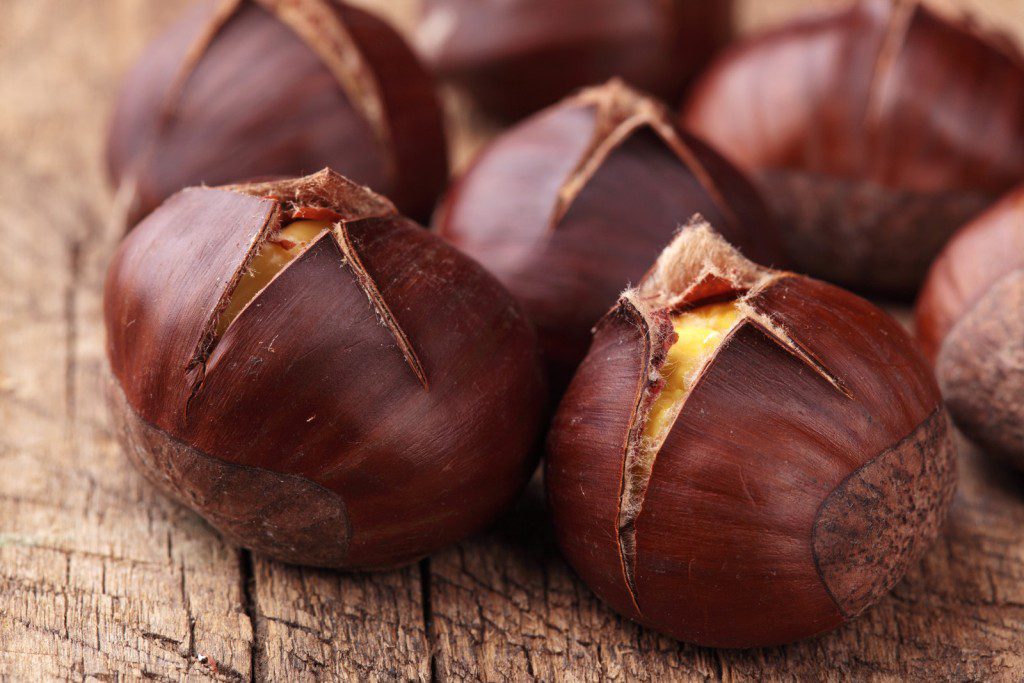
Chestnuts
The tradition of roasting chestnuts dates back to sixteenth century Rome where street vendors sold them, much like we see here in Toronto.
Nutritional Content of Chestnuts
Chestnuts crumble in the mouth to give a sweet flavour, they are low in fat and are in fact a seed, not a nut. They are a good source of dietary fibre, and minerals like manganese, potassium, copper, phosphorous, magnesium and iron. They are also a vitamin powerhouse with Vitamin C, Vitamin B6, Thiamine, Folate, Riboflavin, Niacin and Pantothenic Acid. Zinc and calcium are also present in small amounts. They contain lower amounts of fat and protein than most nuts and seeds and relatively higher amounts of carbohydrate and sugar.
How to Choose Good Chestnuts
These “nuts” are freshest between October to December. Look for fresh ones that are hard, shiny, heavy for their size and do not rattle when you shake them. Because of their starch and sugar content they, they can harbour mold, discard any with visible mold. They are highly perishable, so refrigerate them for up to one week or freeze for up to one month.
Roasting Chestnuts
You can roast them yourself by nicking the skins so that they don’t explode as they heat up. You should cut an X in the skin with a very sharp knife. Cut right through the skin, they have very tough skin so a little pressure is needed. Watch your fingers!
Heat your oven to 400 degrees Fahrenheit, spread chestnuts out on a roasting pan and pop them into the oven for approx 15-20 mins.
Take them out of the oven and let them cool a bit before eating. If you place a towel over them while they cool, the trapped steam will help loosen the skin. When you are ready to eat them, peel them by squeezing them to loosen the skin.
Here’s a link to some chestnut recipes: http://www.epicurious.com/ingredient/chestnut
Looking for more healthy food ideas or nutrition advice? Talk to one of our licensed naturopathic doctors.